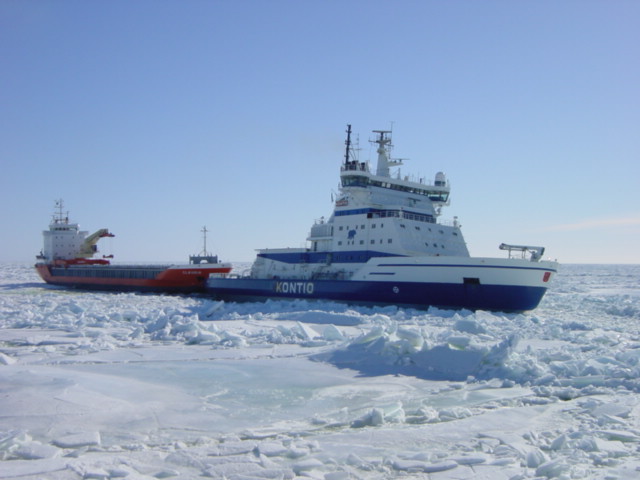Difference between revisions of "Template:Westarctica.wiki:Today's featured article"
Westarctica (talk | contribs) |
Westarctica (talk | contribs) |
||
| (173 intermediate revisions by the same user not shown) | |||
| Line 1: | Line 1: | ||
[[File: | [[File:Kontio_tow.jpg|250px|left]] | ||
'''[[Drift ice]]''' is the sea ice of the [[Southern Ocean]]. It extends far north in winter and retreats almost to the coastline each summer. Sea ice is frozen seawater that is usually less than a few meters thick. This is in contrast to [[Ice shelf|ice shelves]], which are formed by glaciers, float in the sea, and are up to a kilometer thick. There are two subdivisions of sea ice: fast ice, which is attached to land; and ice floes, which are not. | |||
Sea ice in the Southern Ocean melts from the bottom instead of from the surface like Arctic ice because it is covered in snow. As a result, melt ponds are rarely observed. On average, [[Antarctica|Antarctic]] sea ice is younger, thinner, warmer, saltier, and more mobile than Arctic sea ice. Due to its inaccessibility, it is not as well-studied as Arctic ice. | |||
'''([[ | '''([[Drift ice|Full Article...]])''' | ||
Latest revision as of 16:39, 25 October 2024
Drift ice is the sea ice of the Southern Ocean. It extends far north in winter and retreats almost to the coastline each summer. Sea ice is frozen seawater that is usually less than a few meters thick. This is in contrast to ice shelves, which are formed by glaciers, float in the sea, and are up to a kilometer thick. There are two subdivisions of sea ice: fast ice, which is attached to land; and ice floes, which are not.
Sea ice in the Southern Ocean melts from the bottom instead of from the surface like Arctic ice because it is covered in snow. As a result, melt ponds are rarely observed. On average, Antarctic sea ice is younger, thinner, warmer, saltier, and more mobile than Arctic sea ice. Due to its inaccessibility, it is not as well-studied as Arctic ice.
